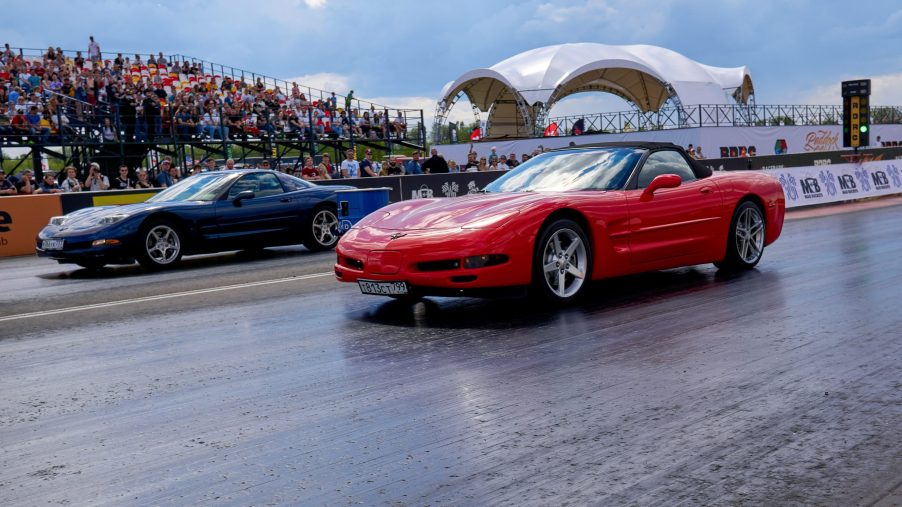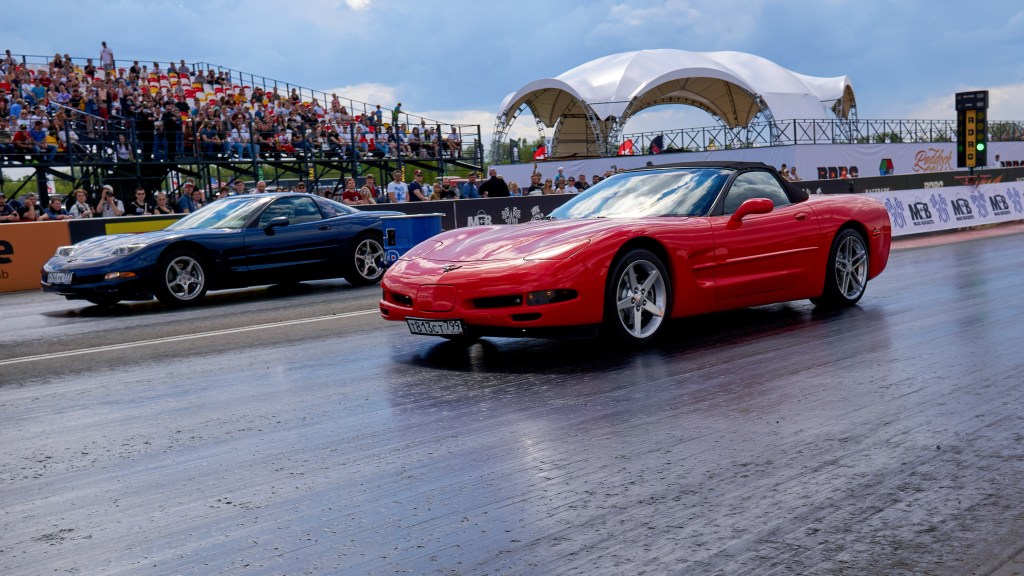
What’s the Best Way to Launch a Car With a Manual Transmission?
Driving a car with a manual transmission is slowly becoming a lost art. Considering only around 18% of Americans can currently drive a stick shift, it’s no wonder that automakers are phasing them out. But for the few remaining “save the manual” enthusiasts, driving a stick shift car, and even racing one, is still an important part of their lives.
However, driving a stick shift can be tricky, especially when racing. Here is the best way to launch a car with a manual transmission and get ahead of the competition from the get-go.
Tires are important when launching a car

Before you practice launching your car, it’s important to do your research on the type of tires that your car has. For example, if you’re driving a streetcar that you want to bring to the drag strip on the weekends, then you might want to look into some stickier summer tires to get a better grip. And if your car is a track-ready race car, then you might want to research drag racing slicks or softer compound tires to get the best launch for your car.
According to Wheels, the critical part of the whole process is the tire that you’re using. It’s important to understand the type of contact patch, tire compound, proper inflation rates, and air temperature that you’re working with.
Setting up for the launch
Before launching your car down the drag strip, it’s important to get it set up first. We don’t mean adding wheelie bars for traction, we mean cleaning out your car to ensure that nothing will fly around when you accelerate rapidly. Also, make sure that the car’s air conditioner is turned off and that your head is pressed against the headrest. Lastly, whether you’re practicing a launch or about to tear it up on the drag strip, make sure that your car is on a flat surface and it doesn’t roll back when you push the clutch in.
Should I do a burnout?

Doing a quick burnout on the drag strip can heat up the tires to ensure that your car gets all of the traction it needs. But if you’re on the street and practicing launching your car, then you might not want to do one for legal reasons. Either way, whether or not you should do a burnout before launching the car is completely up to you.
Find the sweet spot on the clutch
After cleaning up your car and lining it up on the start line, you’ll want to find the sweet spot on the clutch engagement. To do this, rev the engine up and let out the clutch to where the engagement point starts to drop the engine RPMs and take a mental note. Just like when you normally start in first gear, this engagement point is where you’ll have to finesse the launch.
Find the sweet spot in the rev range

Next, you’ll want to find the right RPM range to rev the engine to. This will depend on what type of car you have: front-drive, rear-drive, or all-wheel drive. Wheels reports that all-wheel drive cars will need the clutch disengaged crisply and the RPMs to build rapidly as the “grip is often considerable.”
Launching a front- or rear-drive car, on the other hand, can be tricky. You made need to feed the power progressively on these types of cars to get the best traction. If you launch too fast or too slow, then you run the risk of burning out the clutch or damaging the driveline. If anything, play around with the optimal RPM range for your application and ensure that the car launches smoothly with no bogging or stuttering.
How do you know when you have it right?
According to Wheels, the “holy grail sound effect” is when there’s a momentary squeal of the tires followed by clean traction throughout the gears. It’s a tough goal to reach, depending on the type of car that you have, but with the right amount of patience, you’ll get it down soon enough and will launching your car like a pro!



